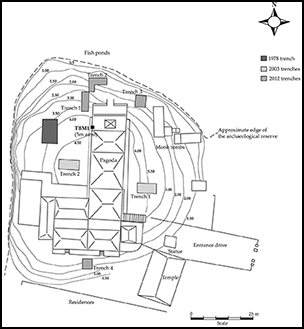Published online by Cambridge University Press: 08 August 2017

The discovery of a small portable grinding stone at Rach Nui in southern Vietnam provides significant new insights into regional Neolithic trade networks and ground stone technologies. Previous research held that the manufacture of stone tools took place near stone sources in the interior, along the Dong Nai and Be River basins, but the Rach Nui grinding stone comes from a Neolithic site in the Mekong Delta, approximately 80km to the south-east. This suggests that some manufacturing occurred away from raw material sources. Technological analysis indicates that the artefact was a portable tool for the polishing, maintenance and repair of ground stone adzes. Its discovery at Rach Nui may indicate the presence of specialist tool makers or itinerant traders. This research illustrates the complexity of Neolithic trading networks, and highlights the technological expertise that circulated alongside finished and incomplete objects.